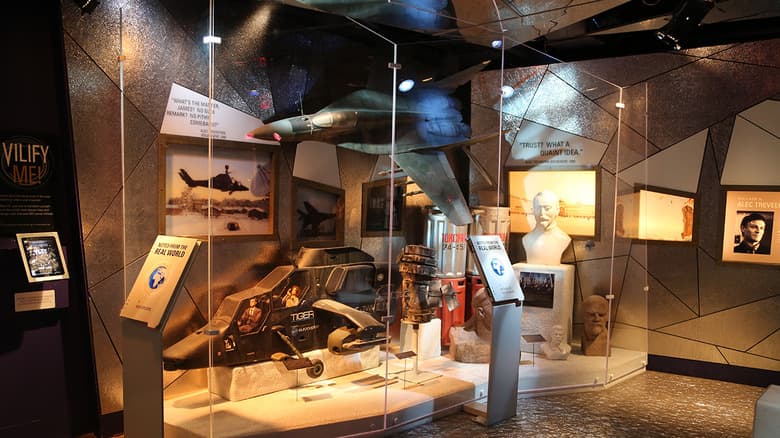The Most Unusual Museums in the USA: From Canned Air to the Museum of Bad Art

In the United States, museums have long ceased to be mere repositories of paintings or antiquities. Here, one can discover true treasures of eccentricity, inspiration, and irony that surprise, intrigue, and bring a smile. In the era of digital entertainment, when free time is often spent on series, video games, or various online activities, visiting an unusual museum becomes a real event — a change of format and a fresh look at creativity and everyday life. America has no shortage of such places, each with its own unique character and story.
One of the popular forms of digital entertainment is online casinos, where people not only play poker or spin slots but also bet on real or virtual matches. Visit the site — casinosapostas.com — for recommendations for beginners and the best online platforms offering favorable conditions.
The Museum of Bad Art in Brookline, Massachusetts
Modest in appearance, this museum is entirely dedicated to “failed” works of art that didn’t make it into traditional galleries. What’s appreciated here is sincerity — the attempt to create, even if the result turned out… strange. Paintings with distorted perspectives, sculptures with absurd proportions — all of it proves that art lives not only in perfection but also in mistakes. The Museum of Bad Art has become a cultural phenomenon: its exhibits make visitors smile but also inspire — encouraging freedom of expression without fear of failure.
The National Museum of Canned Air in Santa Cruz, California
This museum is a true ode to human quirkiness. Its founder collected hundreds of cans filled with air captured in various corners of the world. On the shelves, you’ll find “air from a Queen concert in 1982,” “air from a programmer’s office in Silicon Valley,” or even “morning breeze from the Pacific coast.” At first glance, it’s a joke, but behind the idea lies an ironic attempt to preserve fleeting moments and give shape to what usually escapes us. It’s a reminder of how modern people strive to “capture” time — through selfies, collecting, or digital archives.
The Museum of Strange Medical Instruments in St. Louis, Missouri
Visitors with weak stomachs, beware: this museum offers a look at the darker side of medical history. It features instruments used in the 19th and 20th centuries — from early dental drills to terrifying trepanation tools. Each display comes with a story: who was treated, how, and what the results were. Instead of fear, the exhibition inspires respect — for doctors who worked without anesthesia and for the progress that made medicine safer. This museum not only shocks but educates, breaking stereotypes about the “barbaric methods” of the past.
The Museum of Lies in Richmond, Virginia
Unassuming from the outside, inside it opens up like a theater of absurdity. Every exhibit is fictional: “a piece of the original carpet Neil Armstrong walked on,” “a ballpoint pen owned by Shakespeare,” or “a photo of an invisible man.” The entire museum is a game with perception, where each visitor becomes a co-author. Philosophical questions are raised: What is truth, and how easily can it be replaced? In the age of digital fakes and AI-generated content, such exhibitions become especially relevant.
The International Toilet Museum in Indianapolis, Indiana
Everyday human matters also deserve attention. The International Toilet Museum showcases the evolution of sanitary culture, from ancient ceramic pots to designer bidets of the 21st century. The museum is surprising not only for its technical details but also for its social history — how attitudes toward personal hygiene have shaped architecture, daily life, and even culture. Visitors often say they begin to perceive once-overlooked objects in a whole new way after their visit.
The Museum of Bad Book Covers in Chicago, Illinois
Books with the worst covers — from fantasy with crooked dragons to romance novels with garish illustrations. The museum collects and categorizes editions where the artists clearly went overboard. Instead of mockery, there is gentle humor and acceptance of imperfection. Many exhibits have become cult favorites on the internet, with users eagerly sharing the wildest finds. For graphic designers, this is a source of both inspiration and valuable professional lessons.
Why Are Unusual Museums Becoming Popular?
It’s hard to surprise modern audiences. Traditional exhibitions often feel formulaic, while unusual museums offer an experience — interactive, emotional, and memorable. They become part of meme culture, social networks, and personalized tourism. It’s not just a viewing of exhibits, but a story you want to share with friends — perhaps accompanied by a photo captioned “I was at the Air Museum!” In a time when entertainment has become digital — whether streaming, gaming, or online casinos — the desire to connect with something “real and strange” becomes especially valuable.
Unusual Museums as a Mirror of the Times
Each of the described museums reflects the spirit of the times: a passion for collecting, irony, the desire to break the mold. They are created by enthusiasts, often without the support of major foundations, but with tremendous love for their subject. These aren’t just tourist attractions — they are cultural phenomena reminding us that art has no clear boundaries and that wonder is a feeling that always has a place, even in a can of air.
For travelers tired of classic routes, these museums are a true discovery. They brighten up a trip, stir the imagination, and make you smile. And if you ever feel like you’ve seen it all — just drop by the Museum of Bad Art. You might find true inspiration there.
